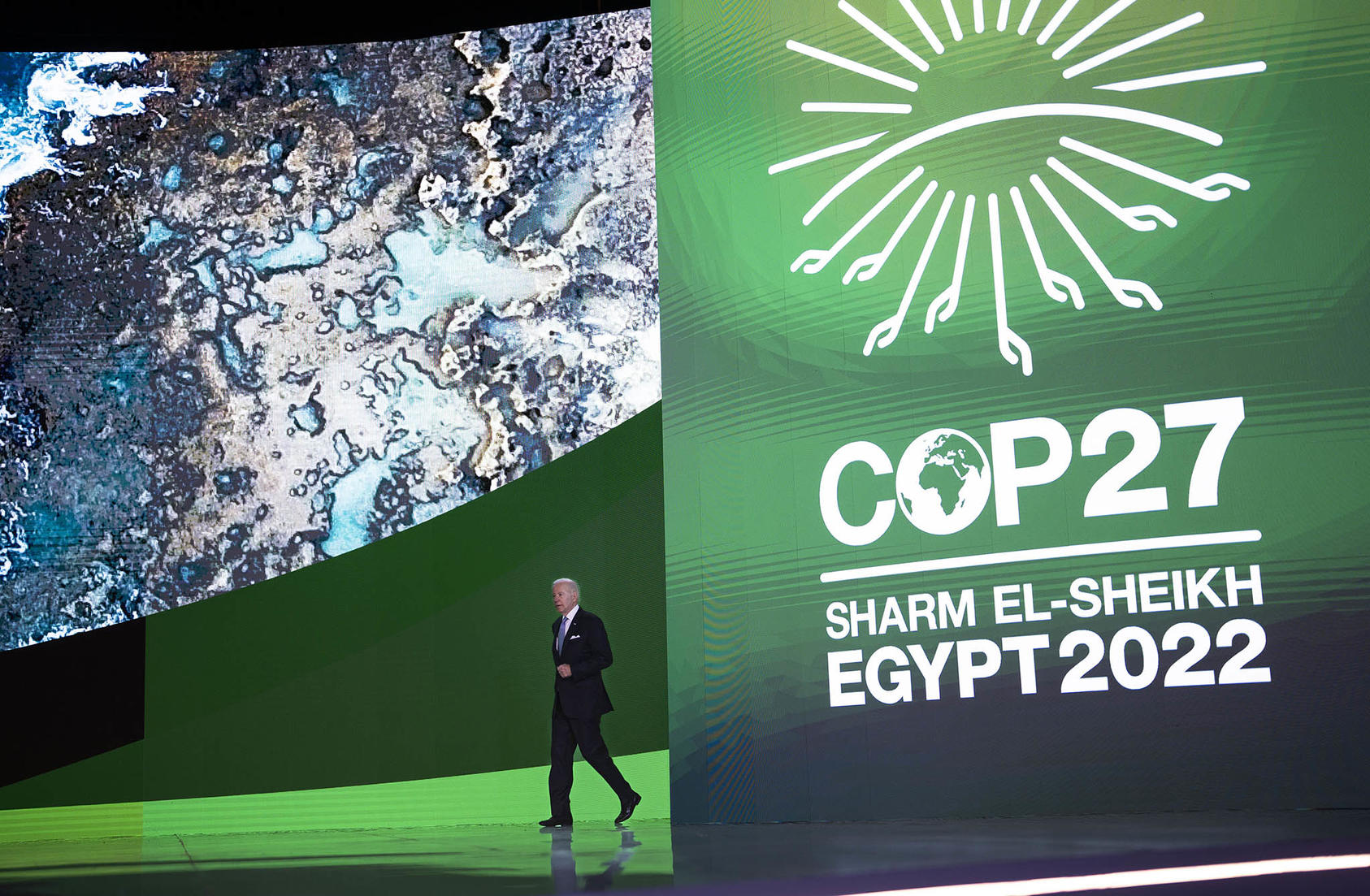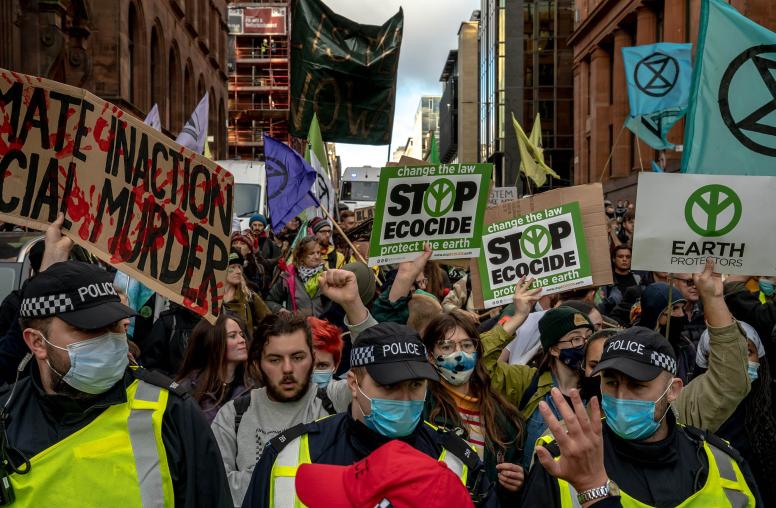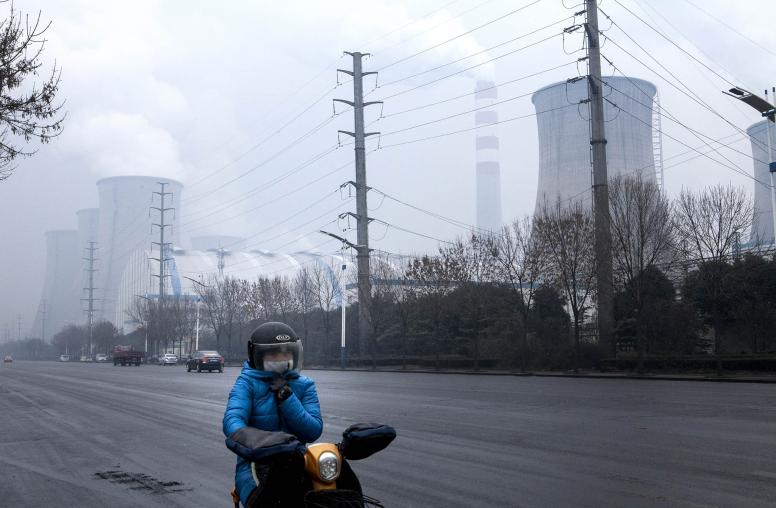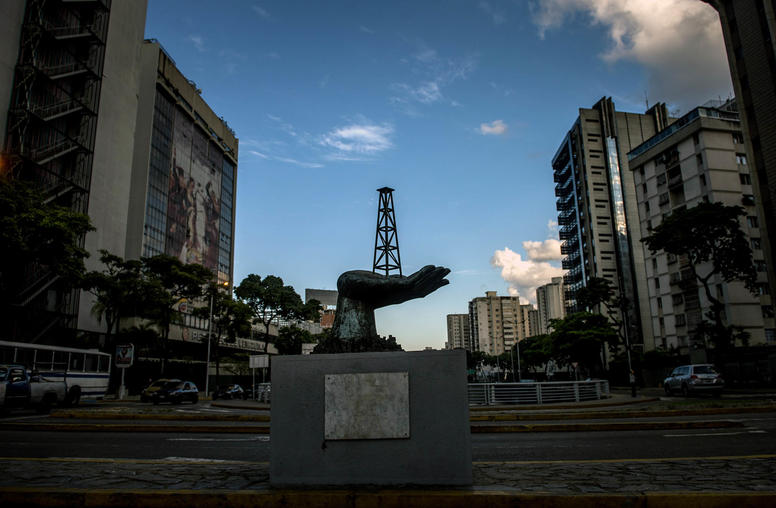Four Takeaways from the COP27 Climate Conference
While COP27 saw political progress and a new loss and damage fund, concrete commitments to reduce emissions remain elusive.
Many global headlines from last year have been shaped by — or contributed to — the visible impacts of climate change. From the floods in Pakistan to the droughts in East Africa, Europe’s energy crisis, global inflation and even the war in Ukraine, the gravity of the climate crisis has come into full focus for millions of people around the world.

And as representatives prepared for the 27th U.N. Climate Change Conference (COP27) earlier this month, a new U.N. report affirmed an already widespread assessment: The world has failed to curb emissions enough to limit global warming to less than 1.5 degrees Celsius, the goal set by the Paris Climate Agreement.
Despite this dire warning, there was unfortunately virtually no progress made to further curb emissions during the two-week COP27. But some important political progress may have laid the groundwork for future results, as China and the United States recommitted to bilateral climate discussions. Meanwhile, a new “loss and damage” fund to support countries dealing with the greatest climate impacts marked a breakthrough on a historically contentious topic.
With COP-27 now in the rear-view mirror, USIP’s Tegan Blaine sorts through the proceedings to offer the four biggest takeaways from the world’s biggest annual climate conference.
1. No Progress on Reducing Greenhouse Gas Emissions
Reducing the impacts of climate change requires reducing the greenhouse gas emissions that are causing it — and COP27 failed to make any substantive progress on that front.
Current commitments fall far short of the overall goals of the Paris Agreement, and countries failed to come to the table with more ambitious commitments. Instead, many are backing away from their prior commitments in light of the global energy crisis and rising inflation.
Next year’s COP28 will mark the conclusion of the first Global Stocktake — a mechanism that measures the world’s progress on implementing the commitments of Paris Agreement. Pressure will continue to mount as that date approaches, but there are few signs that countries are going to deliver on those commitments.
2. China and the U.S. are Back at the Table.
Cooperation between China and the United States has been critical to global progress on climate change over the years. The two countries combined account for more than 50 percent of global emissions, and their bilateral commitments prior to the finalization of the Paris Agreement were vital to getting other countries on board for the historic treaty.
However, the relationship between China and the United States has deteriorated in the intervening years. Other countries have taken note and slowed their own climate-related commitments — meaning U.S.-China tensions have hampered not only bilateral climate cooperation, but global cooperation as well.
The decline in bilateral cooperation culminated this past August, when climate change discussions between the United States and China came to a complete halt after House Speaker Nancy Pelosi’s visit to Taiwan. It wasn’t until the middle of COP27, when President Joe Biden and Chinese leader Xi Jinping met on the sides of the concurrent G20 summit, that U.S.-China dialogue on climate change restarted.
Special Presidential Envoy for Climate John Kerry quickly jumped on this chance to engage with his Chinese counterparts, with whom he has long relationships. The re-establishment of talks provides an opening for future cooperation on climate change on the global stage.
Despite this progress, there are increasing questions about what U.S.-China climate cooperation will look like moving forward. While China has moved aggressively on domestic policy in some climate-related areas and has positioned itself as a global leader on green technologies, it has also been hesitant to strengthen its international commitments. It is unclear how much China seeks to become a global leader on climate change and to use its international relationships to support global progress.
The U.S.-China relationship on climate change will continue to be an important opportunity for collaboration between the two countries. But it is also likely that the United States will need to seek out and strengthen other partnerships to support climate progress.
3. The Creation of a Loss and Damage Fund
Recognizing that many developing countries are among those most vulnerable to climate change despite contributing to it the least, representatives at COP27 agreed to set up a new fund for “loss and damage” to support recovery from climate-related damages that extend beyond what human society can easily adapt to.
The issue of loss and damage has been a sticking point in negotiations for years, with Europe and the United States stalling progress over fears of legal liability for climate damages. Thus, the symbolism of such an agreement cannot be understated — and hopefully will help unlock collaboration in other areas of the negotiation.
However, it is unclear how the fund will be operationalized and how much in pledges are likely to be committed. And there is a very real question about the potential impact of a loss and damage fund when other climate funds have sometimes circumscribed similar issues regarding impact.
Nevertheless, the establishment of this fund is a critical step in recognizing the valid concerns of many developing countries — it just can’t be the only step to support those facing unimaginable stresses from climate change. To this end, COP27 also featured commitments to operationalize the Santiago Network, which provides technical assistance to developing nations to strengthen action on loss and damage.
Parallel approaches are needed to ensure that COP27’s progress on the issue of loss and damage is continued. This includes better alignment between the U.N. Framework Commission on Climate Change’s (UNFCCC) conversations regarding climate-induced migration and similar conversations under the Global Compact for Migration. Additionally, there needs to be regional discussions that address common threats that cross national borders, such as the management of shared resources or action to address the linkages between climate-related food or water insecurity and recruitment into extremist organizations.
4. Work Outside of the COP Framework
Going forward, the most important and ambitious action on climate change may take place outside of the formal COP negotiations — and that’s okay. In fact, it may even strengthen the conference.
While the Paris Agreement represents a historic commitment to tackle climate change, it requires consensus among all the parties for any incremental progress, which can be an insurmountable barrier given the diversity of countries’ interests and concerns.
It may become increasingly important for work on many fronts to take place outside of the behemoth that is the UNFCCC, where more nimble discussions and actions can take place.
One example of a parallel process that can yield results is the Global Methane Pledge (GMP), which has now been signed by over 150 countries. Launched during last year’s COP26 in Glasgow, Scotland, the GMP seeks to reduce emissions of methane by at least 30 percent within the decade.
A year later, over 50 countries arrived at COP27 with plans for how they would reduce methane emissions — an important contribution to the Paris Agreement’s goal of reducing overall greenhouse gas emissions.
Another example is the role of sub-national governments, such as states and cities, who can help drive innovative policy and action at the national level as well as form powerful coalitions across global networks of similar players. And while their role was less visible at COP27, non-state actors, such as private sector businesses, can also drive important and substantive change.
The progress at COP27 — as well as the lack of it on some fronts — begs the question of how the global community can harness the power of other forums, whether they be political, technical or economic, to address climate change. There are numerous innovative proposals, approaches and actions that have the potential to help countries come together around common goals. Lines of effort that run parallel to the COP framework could help move them forward, thereby strengthening and supporting the Paris Agreement and allowing it to achieve its potential.



